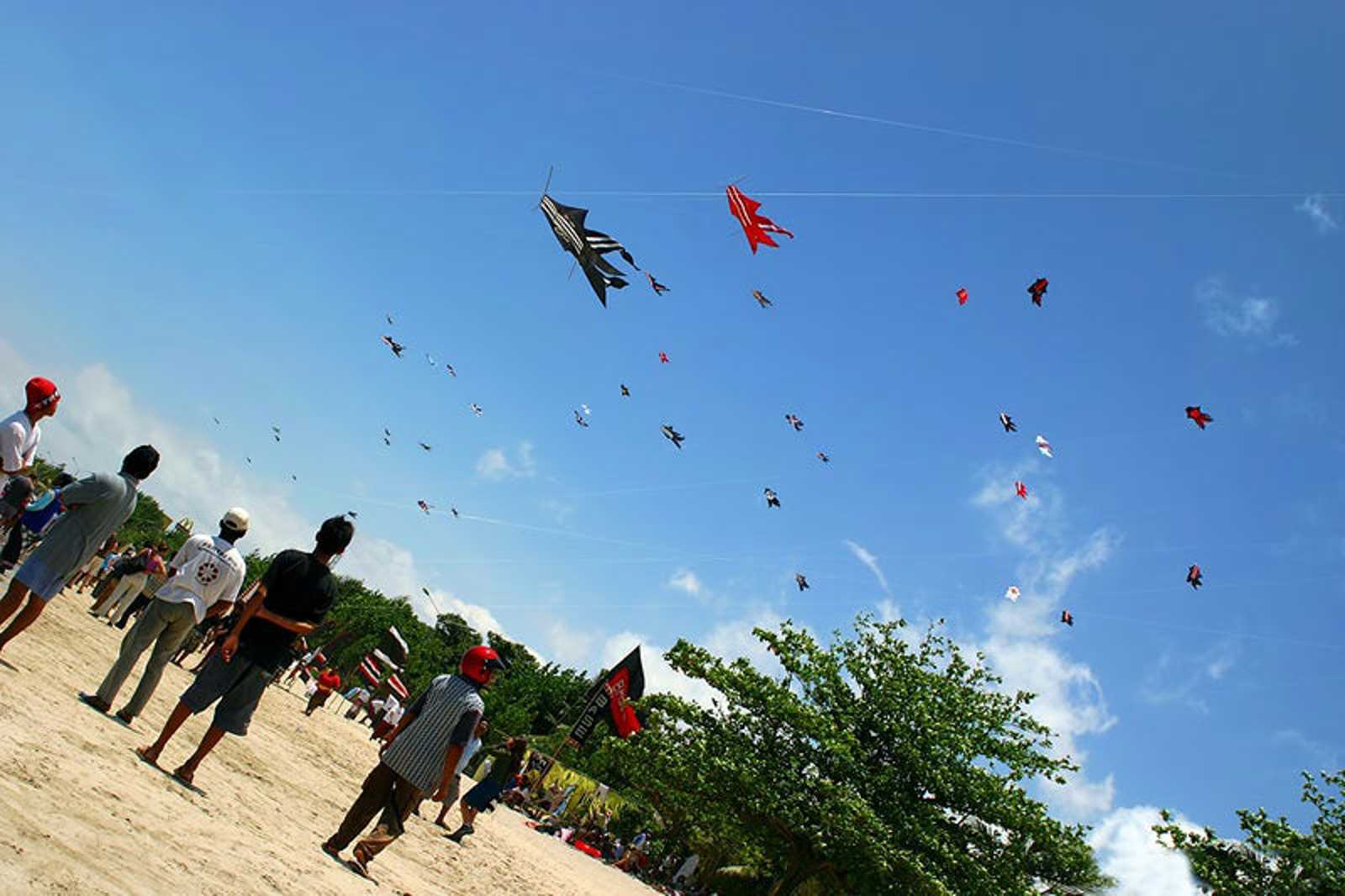The Bali Kites Festival is a major event that takes place annually between July and August (but sometimes up until October). It kicks off at the start of the windy season in Bali and the main festival takes place along the eastern coast of Padanggalak, just north of Sanur. The specific schedules are often confirmed following favorable weather conditions.
Hundreds of competing kite troupes gather from all over the island to pilot their traditional kites, oftentimes alongside international teams with modern kites in various shapes and sizes. The kite festival in Bali started off as a seasonal agrarian festival. It was held to thank the heavens for abundant crops and harvests.
Bali Kites Festival - one of the highlights of 26 Best Things to Do in Sanur (Read all about Bali here)

Highlights of Bali Kites Festival
The kiting festivals eventually became a competitive ground for youth groups who send their teams to participate and win prize money. Competitions are also usually held for ‘new creation’ kites. These may include detailed 3-dimensional figures and unusual designs ranging from Hindu gods, cars and motorbikes, to mascots and brand sponsors. A gamelan orchestra accompanies each troupe, which adds to the joyous spirit of the dramatic take-offs.
Traditional Balinese kites tend to be gigantic, measuring up to 4 meters wide and 10 meters long. Some other versions, such as the janggan type have impressive flowing ribbon tails. Tails often reach 100 meters or more in length. Jointly built at the communal banjar village halls all over Bali, skilled youths, supervised by experienced elders, craft bamboo frameworks for weeks up to the major event.

Lightweight fabrics are selected according to an agreed-upon color scheme. Some are fitted with intricately carved heads. .
The bebean type is the most common design with a traditional outline of a fish. This is the common ‘giant kite’ of Bali that dominates the skies. The janggan somewhat resembles birds, with shorter and rounder wings. Their long flowing kedeber ribbon tails also often outshine the kite’s body once airborne. In each competition, the task of assembling and flying the entailing kedeber is a major challenge for the piloting troupe.
A troupe normally comprises a dozen or so boys and men. Categories to win include ‘best launch’, ‘best design’ and ‘longest flight’. Occasionally, the kites descend over nearby rice paddies. Team members must dash onto the fields to retrieve their painstakingly built kites.

Kites all over Bali's skies
The skies over Padanggalak are dominated by these flying giants during the Bali Kites Festival. Even so, you’ll witness kite-filled skies on any given day between June and August – every year. Skies over Bali are just as elaborately decorated as any Balinese procession during Bali’s windy season. Some kites are even fitted with sound instruments in the form vibrating bows called guwang. These generate a resonating hum that can be heard from far.

Bali Kites Festival
Location: Padanggalak Beach, Jalan Padanggalak, Kesiman, Denpasar, Bali, Indonesia
Open: June–August



















